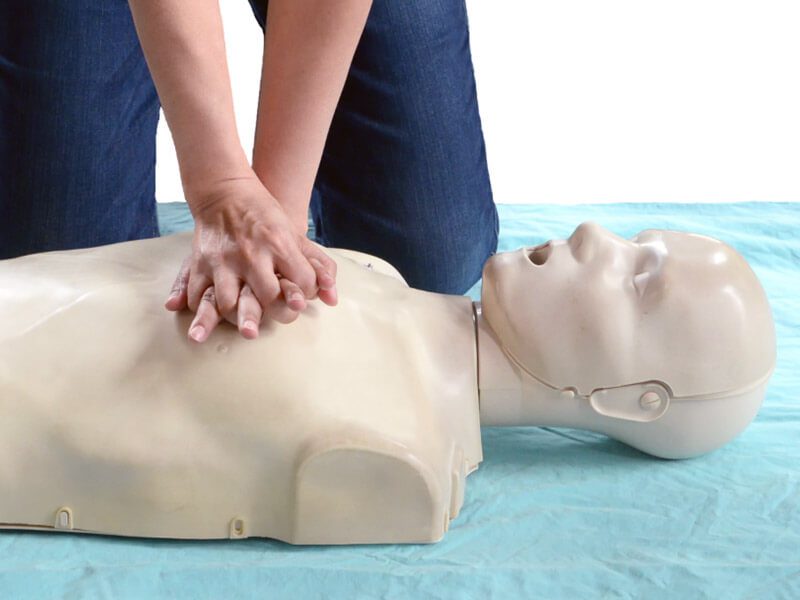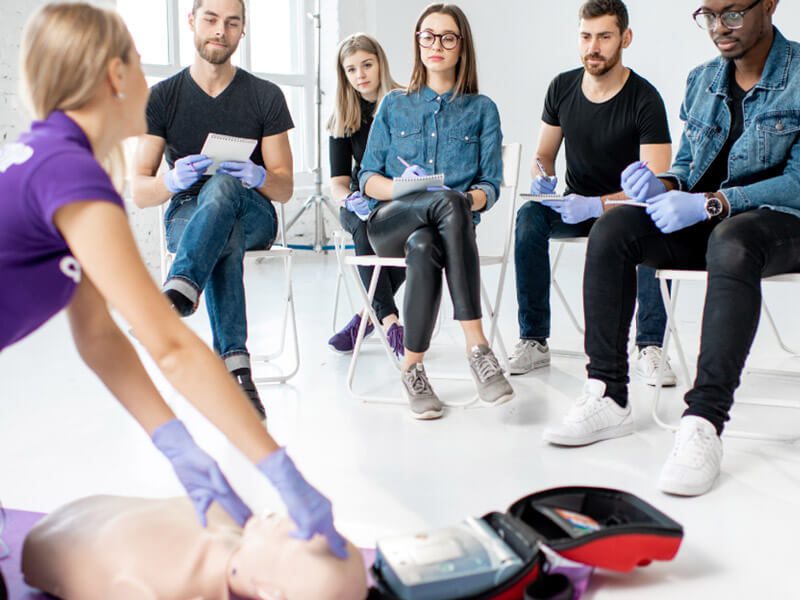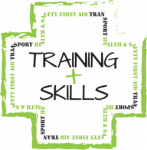An understanding of basic first aid is surely something everyone needs along with the confidence to put their learning into action when necessary.
Learning CPR (cardiopulmonary resuscitation) is one of the most vital bits of first aid training you can have. First aid often summons up images of a kit in a tin with plasters for treating minor injuries. However, the key function of first aid is to provide immediate treatment to prevent further injury. You are providing basic support while you wait for professional medical support to arrive. In the case of something like cardiac arrest this support is vital and is quite literally first aid for life.

Can CPR change a life?
A cardiac arrest will kill you quickly. It can happen at any time. The attack is sudden and leaves the person unconscious and not breathing. Immediate attention is necessary, or they will die. Calling an ambulance is only part of the answer. Without intervention in the form of CPR or a defibrillator, they’ll be dead when the paramedical team get there. Will you be the person who can keep them alive temporarily while help is on the way?
How does the thought of being responsible for saving that life feel? Are you confident that you’d be able to take action or uncertain about exactly what CPR involves? The good news is that the operator who takes the 999 call will do their best to talk you through what you need to do. But wouldn’t it be better if these life-saving actions were something that you were already familiar with. After all, you don’t wait until a car pulls out in front of you to learn about emergency stops!
You also can’t make the assumption that you’ll have that support. Consider the possibility that the incident could occur in an area with no phone signal. Someone will have to go and make that vital call, but the unconscious person needs to be given CPR where they are. Are you up to keeping them alive while the call for help is made?
How often does CPR save a life?
It’s estimated that 60,000 cardiac arrests happen every year in a non-hospital setting and only 40% of these have CPR delivered at the scene by some who knew the importance of first aid for life. Talking action in the first three minutes increases the chances of survival by 50%. With every minute that passes the chances that the individual suffering the cardiac attack will survive goes down by 10%.
How long does it take to learn CPR?
Taking a course and spending just half a day learning these skills means that you’ll know what to do when a stranger, a colleague or a family member needs you most. Here’s what our CPR course that delivers a life-saving difference offers:
- Basic life support
- The recovery position and when to use it
- CPR
- Safe use of a defibrillator
- What to do when emergency services arrive
Training gives you a chance to ask questions and be sure you are confident with what you need to do before you have to put it into practice. It’s being prepared for a situation you hope that you’ll never be in but knowing that you can tip the balance between life and death.


